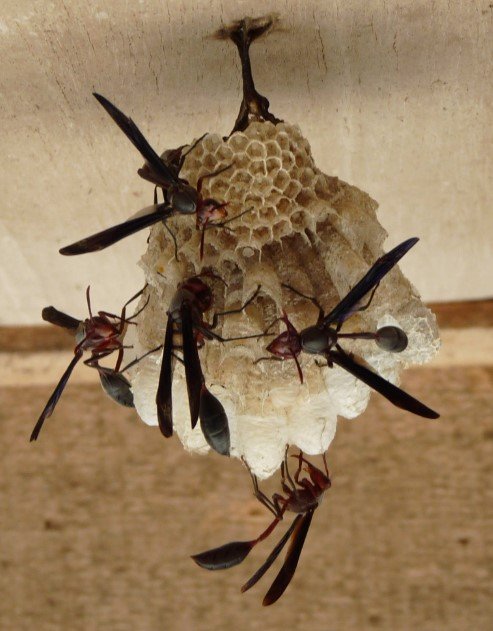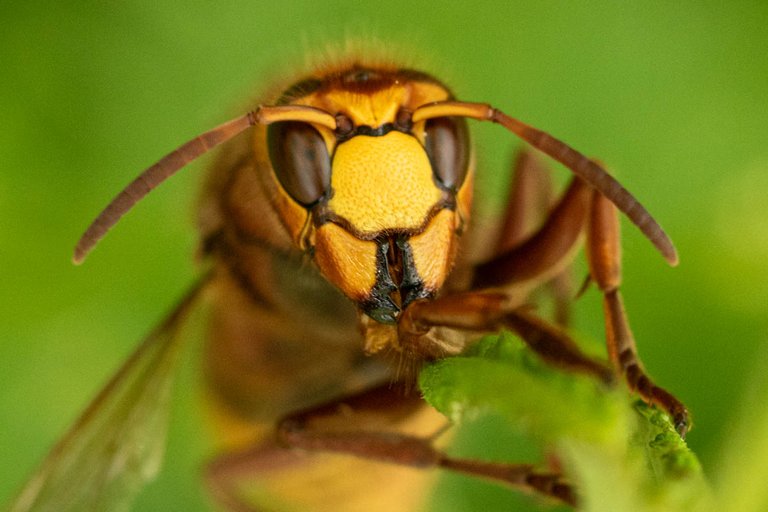In October I photographed a hornet for the first time. The photo shows a dead specimen. I have many photos, and the whole story probably won't fit in one post; below I'll explain why.
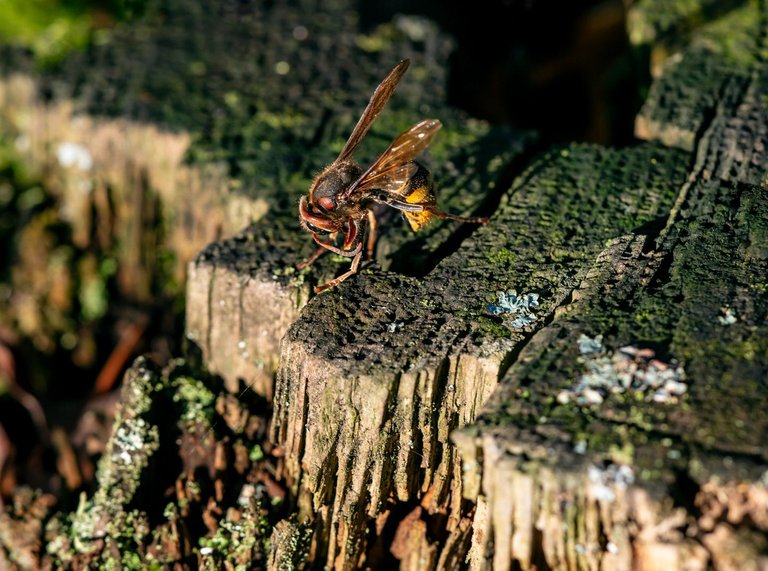
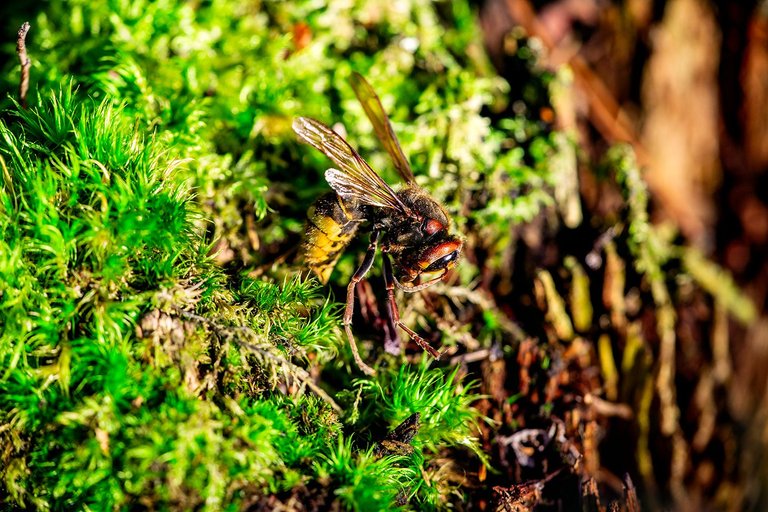
First, a little introduction. Every summer I encounter wasps, bees and bumblebees, but I have never encountered hornets - at least not up close. Moreover, I don't have a comparison photo to show you the difference.
The hornet looks like a large wasp, you could say it's the Wasp's Big Brother - and it's much more dangerous. How to tell a hornet from a common wasp? They are very similar, the main difference is in size - the hornet is 3-4 times larger and can reach a length of 5 cm. The hornet has the same striped black and yellow body color as the wasp, but its yellow color is less intense.
Even a bite of a single hornet would be dangerous and deliver you some painful, excruciating consequences - but if you carelessly disturb their nest... a single hornet can bite you several times in a row, thus attack by an angry swarm of hornets can became fatal.
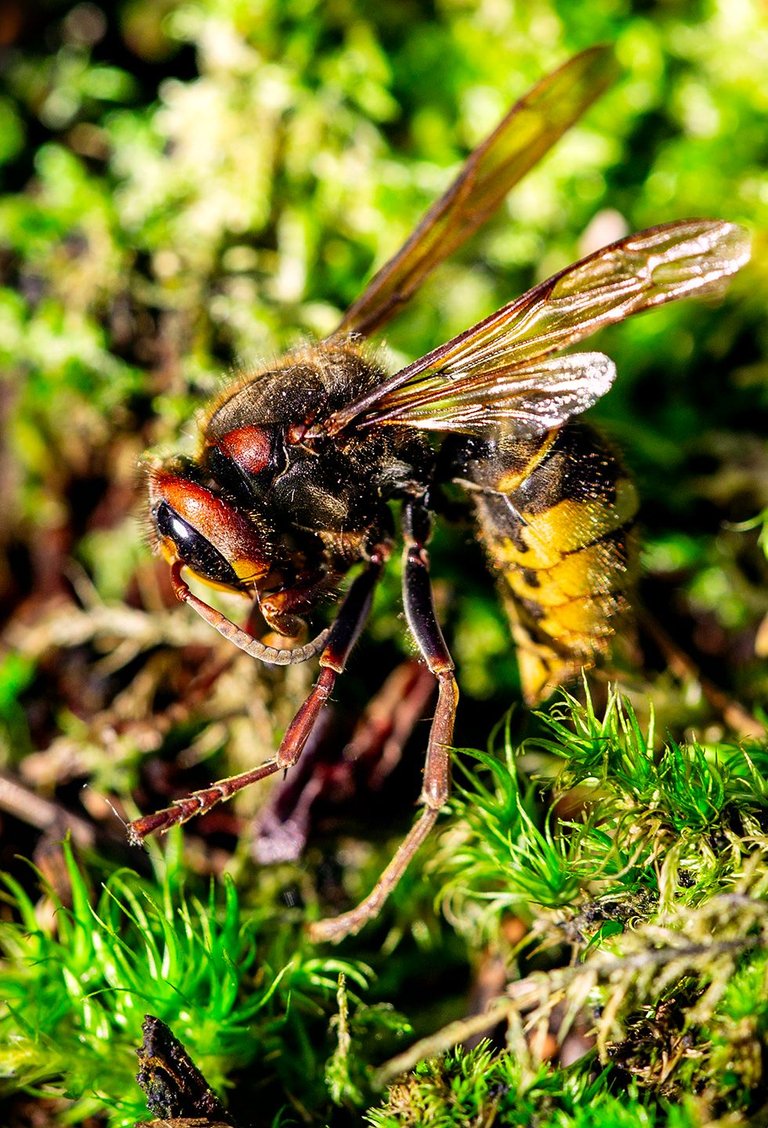
Now back to my peculiar story. This summer we discovered that hornets infested the attic of our summer house. Cant say we were pleased or curious... no way! My wife had done some research on how to deal with this scourge, and we decided to wait until the end of the summer and remove the nest when the cold season came, when the hornets went into torpor. In October, we returned to our summer house to carry out this mission... and found the entire porch covered in dead hornets. (These were the ones that got lost - they couldn't find a crack to fly out, got stuck in the house and eventually died of starvation.)
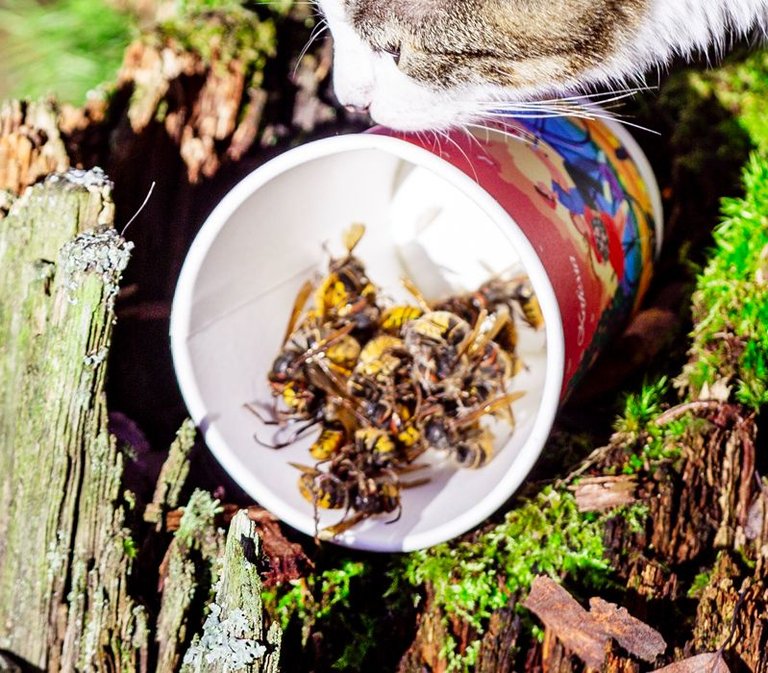
I collected the corpses scattered across veranda floor in a paper cup in the photo - 24 in total. The neighbor's cat also popped up for his hornet investigation.. or rather to check - whether they were edible or not. They were deemed unforageable :) Some of the corpses were preserved so well that could pose perfectly for a macro photo shoot in the rays of the autumn sun. I arranged my model at the rotten mossy stump.
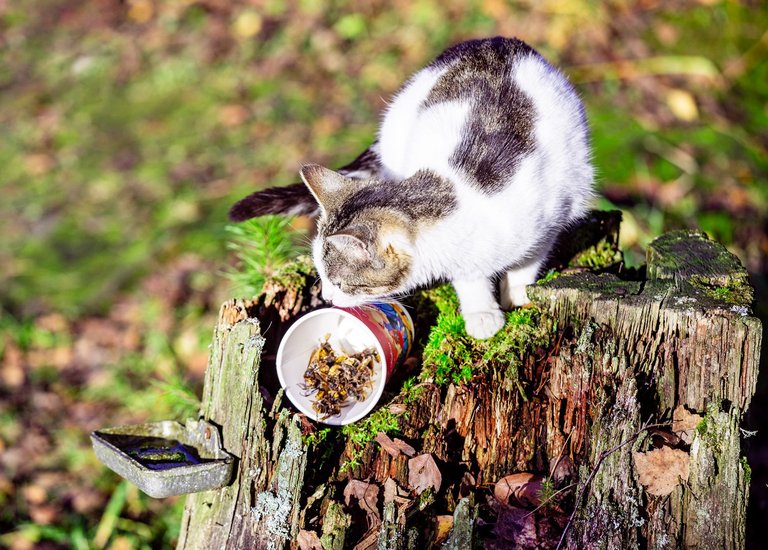
So, all the photos you see in this post are staged, with a dead hornet posing for me...
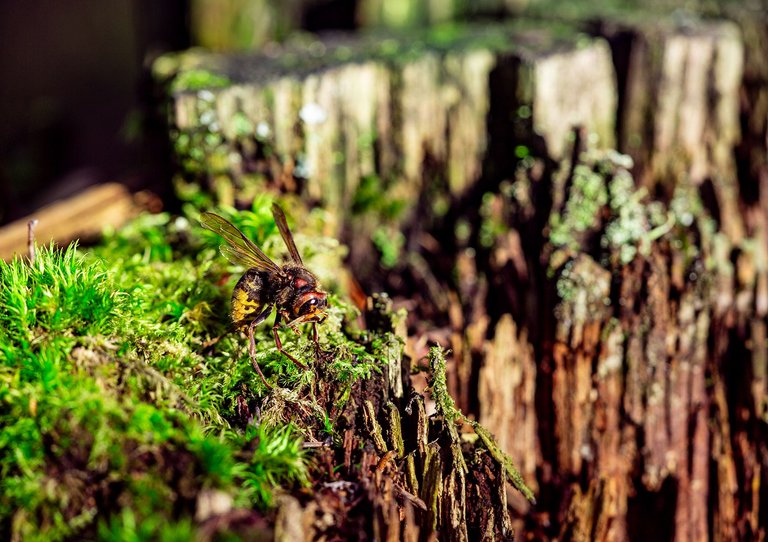
...and the nest by the end of summer, grew to the size of a football; and turned out to be quite heavy... (about 600-700 grams). We were really scared. Fortunately, it was all quiet, showed no signs of life - the hornets were hibernating. I quickly dropped the nest into a plastic bag, and after I was sure it was silent, I unwrapped it again to have a closer look and take a few photos. There is no reason to save it alive, I would have thrown it into the fire without a doubt... but instead I wrapped it in several layers of polyethylene and left it to wintertime do the rest - the frost certainly will finish off the sleeping insects, and perhaps next season I will be able to take a closer look at more bowels of this building.
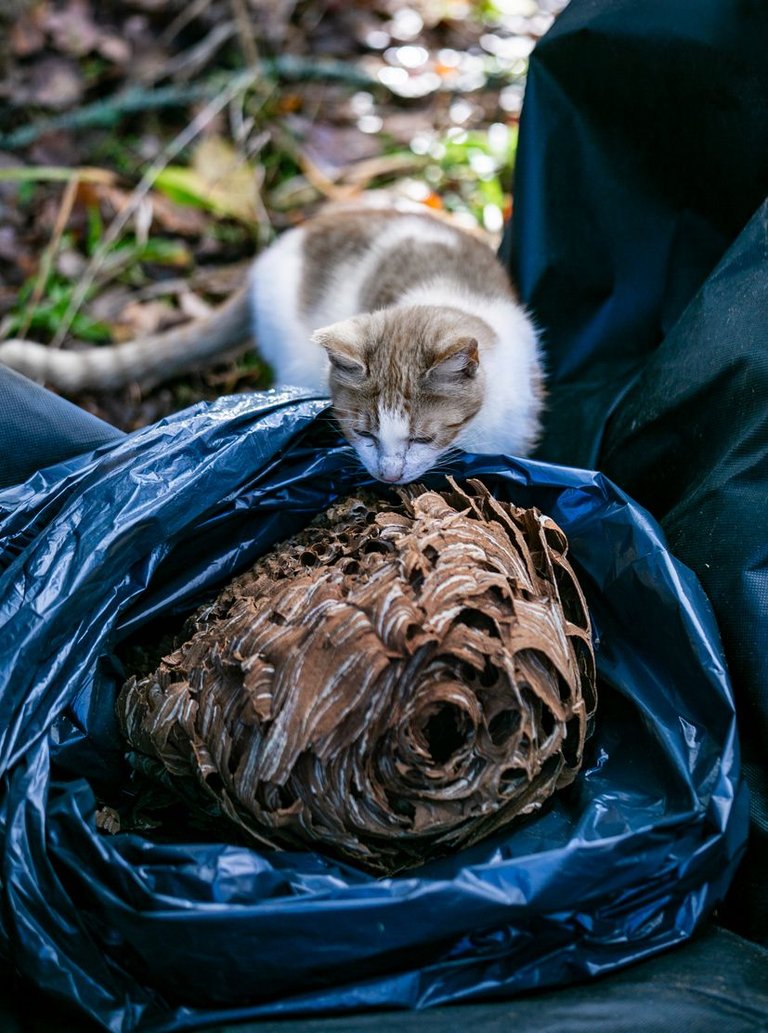
The building actually is quite interesting. Through several damaged fragments the inside became visible enough to understand that the nest consisted of five levels / floors / tiers _ I dont know which word will better describe it.
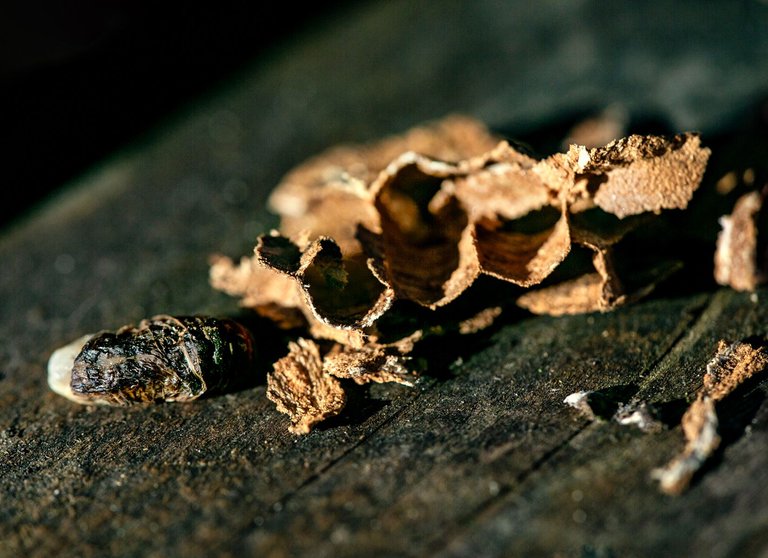
But, I repeat, I did not delve into the sleeping nest - I did not dare; when dealing with hornets, it is better not to take risks. The recycled paper from wood, from which the walls of the house are made, is actually very fragile, and the nest is easily destroyed by the slightest physical impact. The walls of the nest, which were attached to the ceiling, collapsed when I knocked it down, I photographed one such fragment separately. A hornet larva fell out of it.
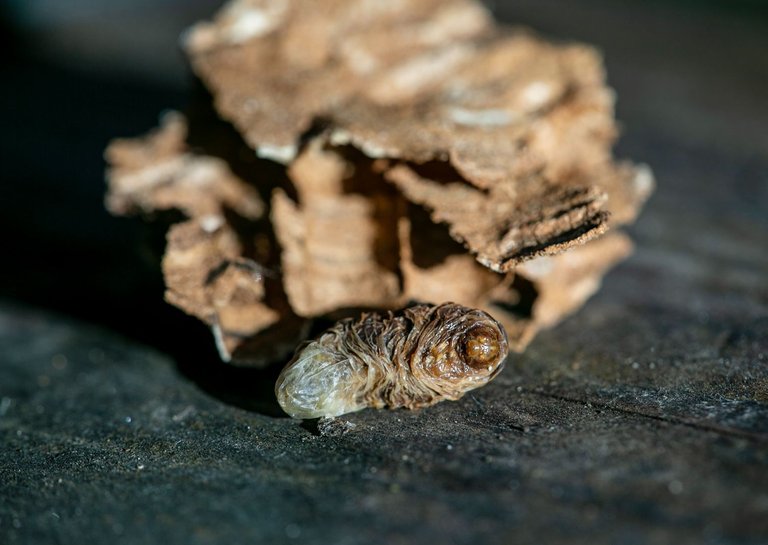
I dont see this creature as a nice person... especially since I am in the know it will not end up with a beautiful butterfly. Below is the crop of same photo.
This photo goes as my entry to the Photofeed macro photography challenge, round #93. Check the post by the link to see other beautiful #macro entries.
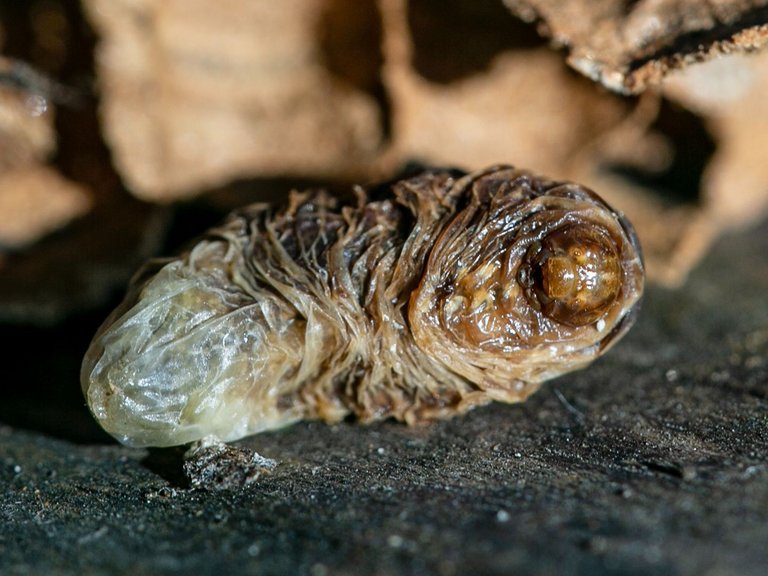
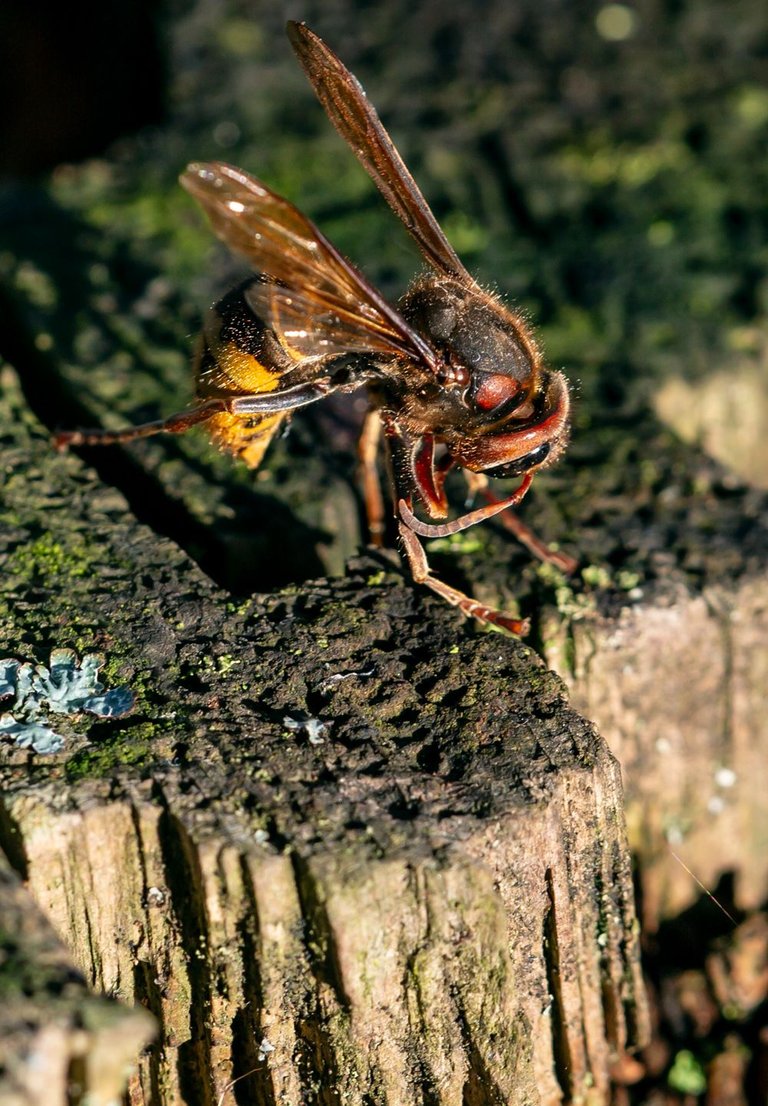
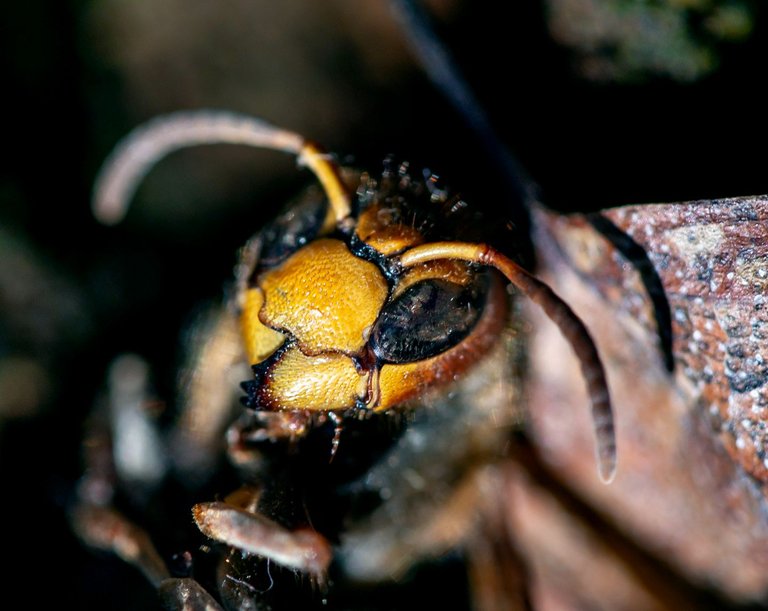
@borjan, @solominer, @dannewton - welcome to read the story and enjoy the macros. Let me round up my post here, and - next time!
| location: | St.Petersburg, Russia | October 2024 | natural light |
| camera/lens: | Canon 5dm3 | Sigma 150mm | raw-conv |

Below is the version for my Russian followers.
В октябре я впервые сфотографировал шершня. На фото - мертвая особь. У меня много фотографий, и наверное весь рассказ не уместится в один пост; ниже я объясню, почему.
Для начала небольшое предисловие. Каждым летом я встречаю ос, пчел и шмелей, но до сих пор не сталкивался с шершнями - во всяком случае, так близко. Тем более у меня нет сравнительной фотографии, чтобы наглядно показать вам разницу.
Шершень по внешнему виду похож на большую осу, можно сказать что это Старший Брат Осы - и он гораздо опаснее. Как отличить шершня от обычной осы? Они очень похожи, главное различие заключается в размере - шершень в 3-4 раза больше и может достигать длины в 5 см. Шершень имеет такую же полосатую черно-желтую окраску тела как и оса, но его желтый цвет менее интенсивный. Даже один укус шершня опасен и доставит вам болезненные, мучительные последствия, вплоть до удушья. А уж если вы неосторожно потревожили их гнездо... ой-вэй. Один шершень может ужалить несколько раз подряд, а нападение разозленной стаи скорее всего окжется для вас фатальным.
А теперь я перехожу непосредственно к моей истории. Этим летом мы обнаружили, что на чердаке нашего дома поселились шершни. Моя жена изучила вопрос, как бороться с таким бедствием, и мы решили потерпеть до конца лета, и удалить гнездо с наступлением холодного сезона, когда шершни впадают в оцепенение. В октябре мы вернулись в наш летний домик, чтобы выполнить эту миссию... и увидели что вся веранда усеяна мертвыми шершнями. (Это были особи, которые потерялись - не смогли найти щель чтобы вылететь наружу, застряли в доме и в конечном итоге умерли от голода).

Разбросанные по полу трупы я сосчитал и собрал в стаканчик - 24 штуки. Соседский кот присоединился к моей инспекции, но его интересовал единственный аспект, съедобно это или нет. (Комиссия постановила: съедобной ценности не представляют). Некоторые модели сохранились так хорошо, что отлично попозировали на трухлявом пне, в лучах осеннего солнца. Таким образом, все фото в посте - постановочные...
...А само гнездо выросло до размеров футбольного мяча! И оказалось довольно увесистым... (примерно 600-700 грамм). Мы правда очень боялись. К счастью, оно не подавало никаких признаков жизни, все шершни спали зимней спячкой. Я уронил гнездо в пластиковый пакет, а когда убедился что гнездо безмолвствует, развернул пакет обратно чтобы поразглядывать поближе и сделать несколько фото. Сохранять его нет причин, и я без сомнений кинул бы его в костер... но вместо этого я завернул его в несколько слоев полиэтилена, и оставил зимовать - зимний мороз наверняка добьет спящих насекомых, и в следующем сезоне, возможно, я смогу повнимательнее рассмотреть внутренности этого гнезда.
Домик на самом деле любопытный. Сквозь несколько отвалившихся стенок, стало видно что гнездо состоит из пяти ярусов. Но, повторюсь, я не стал углубляться в спящее гнездо - я не осмелился; имея дело с шершнями, лучше не рисковать. Переработанная из древесины бумага, из которой сделаны стенки дома, на самом деле очень хрупкая, и гнездо легко разрушается от малейшего физического воздействия. Стенки гнезда, которыми оно крепилось к потолку, разрушились когда я сбивал его вниз, один такой фрагмент я сфотографировал отдельно. Из него выпала личинка шершня. Не могу назвать ее особенно приятной особой...
На сегодня всё; продолжение следует!





